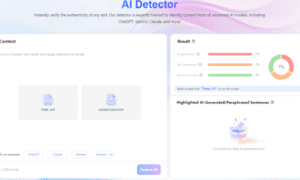Two essential considerations customers consider when choosing a car insurance policy are the insurance premium and coverage amount. The cost of insurance premiums relies on several factors. Your car’s model and age too affect how much you pay for the insurance premium. Many customers overlook these two aspects, but they significantly affect premium costs. They can affect the price of replacements/repairs and the likelihood of claims. Understanding how your car’s key characteristics impact insurance costs will help you decide wisely. Let’s fully understand how a car’s model and age influence the insurance premium.
Understanding How A Car’s Age And Model Affects Insurance Premiums
Here are the top contributing factors that relate a car’s age and model to the insurance premium amount:
New Car Models
Typically, new car models have costlier insurance premiums than older ones. The prime reason is that the cost of repairing or replacing a new car is quite higher than that of older models. The latest cars are equipped with advanced features like backup cameras, parking sensors, etc. These tech features do guarantee safety, but they are expensive when it comes to replacement or repair. As a result, the premium cost rises.
Usually, new car models need a more comprehensive coverage that adds to the premium cost. For example, the latest expensive cars like BMWs have higher insurance costs since they are costly to repair or replace the parts if you meet up with an accident.
Let’s understand some key aspects of new car models that affect the insurance premium.
Theft Risk
Theft risk is generally higher for newer car models because they are more appealing. Insurance companies consider theft risk when calculating premiums.
High Market Value
New car models have higher market values than older ones. If you have a new car model, the car insurance company has to consider the coverage they must pay if you face an accident or damage incurred to your car by other means.
High-Tech Equipment
Most new cars are equipped with high-tech equipment that increases the insurance premium. For example, equipment like tracking devices, smart keys, etc., can be expensive to repair. Insurance companies are well aware of the repair or replacement expenses associated with such equipment, and therefore, they charge higher premiums for the latest car models.
Buying a new car means you can add gap insurance to your policy. Although it increases the premium, it covers the variance between the car’s purchase price and actual cash value.
Old Car Models
As your car ages, its value depreciates, eventually reducing insurance premiums. In the event of an accident, the cost of repairing an older car is usually lower than that of a newer car. The reduced popularity of old car models may also lead to lower insurance premium costs.
The following section discusses some key aspects in the context of old car models that affect the insurance premium.
Reduced Replacement And Repair Costs
For old car models, insurers may adjust rates to reflect reduced repair costs and lower replacement value.
Limited Safety Features
Older cars often lack many safety features. These features make cars more susceptible to accidents or incur more damage during a collision. Driving a classic car also means the repair cost is higher than a newer car model, leading to expensive insurance premiums.
Mileage
A car’s age and model are usually interrelated with its mileage. High mileage may raise the odds of mechanical issues and affect the insurance premiums. Insurance companies evaluate mileage as an essential component of the risk profile.
Insurance For Classic Cars
Classic cars, chiefly belonging to older models, uniquely impact insurance premiums. They come with low replacement costs due to their age. However, the corresponding insurance premium is higher than that of newer car models due to some exceptional features and limited availability. They come with some specialized parts that are difficult to find in the market. So, the corresponding replacement or repair increases the cost of the premium.
Car’s Model Popularity And Theft Risk
Cars are always susceptible to theft risk, so their safety is paramount. Popular car models that are demanding in the market usually have higher chances of theft risks. Such car models will have frequent insurance claims, which insurers consider. So, buying a car more prone to theft can lead to higher insurance premium costs. Specific car models are key attractions for thieves, and eventually, they have costly premiums. Not just fancy sports cars but even some car models found on roads daily are popular targets among thieves.
Insurers are well acquainted with which car models have a high theft risk and are common targets of thieves. Accordingly, they charge insurance premiums for particular car models.
Other Contributing Factors
Repair cost is one of the major considerations in the context of insurance premiums. Cars that are simpler to repair and affordable usually have lower insurance premiums. The reason is that their parts are easily available, and repair complexity is not high. On the other hand, classic cars are difficult to repair, and their replacement parts are hard to find. Hence, their insurance premiums are pricier.
Sports cars and other high-performance cars come with high insurance premiums. They are linked with risky driving habits and uncontrollable fast speeds that increase the chances of accidents. The higher chances of accidents lead to an increased number of claims, which in turn contributes to higher insurance premiums.
Types Of Cars With High Insurance Premiums
Here’s an overview of types of cars that charge high insurance premiums.
- High-end luxury cars are costlier to repair and replace. So, their insurance premiums are comparatively higher.
- Some SUV cars are equipped with cutting-edge safety features. However, their large sizes make them prone to accidents, which in turn increases the insurance premium costs.
- Sports cars with powerful engines have high accident rates, making the driver prone to risky driving habits.
Conclusion
Your car’s age and model directly impact the insurance premiums to be paid. Generally, new car models cost more to insure, whereas old car models have lower premiums. Factors like your driving habits, implemented safety features, and location also impact the premium. Understanding how the premium amount varies based on your car’s age and model will help you get the best deal. If you want to benefit from lower insurance premiums, you need to consider your vehicle type and compare premiums per the car model.
Frequently Asked Questions (FAQs)
Are all kinds of insurance affected by the car age?
No, all insurance coverage is not equally affected by your car’s age. ‘Comprehensive and Collision Coverage’ directly relates to your car’s value. As the car’s value depreciates, the coverage cost also reduces. ‘Liability Coverage’ covers the damage you do to other people or property. So, in that case, the car’s age doesn’t affect the insurance.
What’s the most effective way to reduce my car insurance premium?
Retaining a safe driving record is the finest way to lower your insurance premium. You can also increase your deductibles, register for telematics programs, or avail of suitable insurance discounts.
Does the presence of the latest tech features affect my car insurance premium?
Yes, a car equipped with high-tech features can significantly influence the premium. Generally, insurance companies consider the expense of repairing and replacing a vehicle that incurred damage beyond repair. Hence, a vehicle with several high-end tech features will raise the premium because the car insurance company has to plan a higher cost if you make a claim.
How does the car type impact insurance premiums?
Details like your car’s model and age, make, trim, safety features, etc., must be considered when assessing the premium cost. These factors determine your car’s worth and how much it can cost to replace or repair it if the claim is qualified.
Does an affordable car come with a low insurance premium?
Yes, an economical car not only has low purchase costs but also charges lower insurance premiums. It is a cost-effective choice that can benefit both the driver and insurer. It balances affordability with the need for reliability and safety.



































